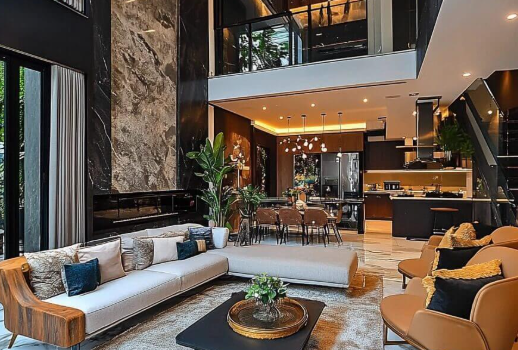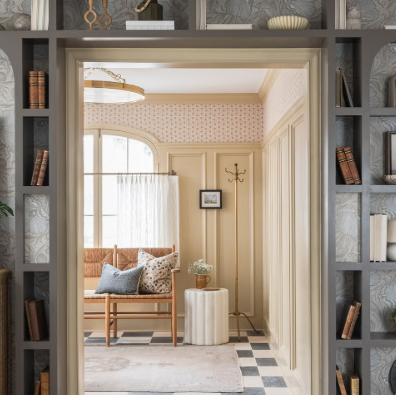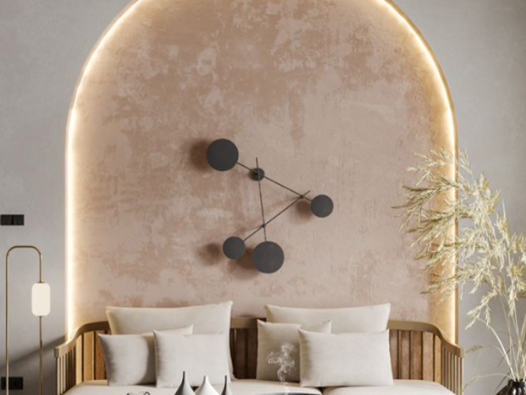
Our living environments have a profound effect on both our mental and physical well-being. By combining wellness principles with thoughtful interior design, you can create a home that not only looks beautiful but also nurtures health, happiness, and relaxation. Designing with wellness in mind allows homeowners to establish spaces that promote balance and tranquility. In this post, we will explore how wellness and interior design intersect, offer ideas for wellness-inspired rooms, and highlight the importance of eco-friendly design for a healthier home.
What is Wellness Interior Design?
Wellness interior design is focused on creating spaces that enhance both physical and mental health. This design approach prioritizes comfort, natural materials, and sustainability, while minimizing stress-inducing elements. It’s about more than just aesthetics—it’s about designing spaces that align with well-being goals and contribute to a balanced lifestyle.
Key Elements of Wellness Design:
- Natural Elements: Incorporating nature-inspired materials, plants, and outdoor views.
- Comfortable Spaces: Designing areas specifically for relaxation and mindfulness.
- Sustainability: Choosing eco-conscious materials and practices that support healthier living.
- Improved Air Quality: Using low-VOC paints and air-purifying plants to maintain clean, fresh air.
- Light and Sound Optimization: Maximizing natural light and reducing noise pollution.
Designing a Space for Health and Well-Being
Creating a healthy living space means designing interiors that not only look good but also support your well-being. It’s about achieving an environment that fosters relaxation, clarity, and calmness.
- Maximize Natural Light: Natural light is essential for mood improvement, better sleep, and overall productivity. Design your space with large windows, skylights, or glass doors to let the sunlight flood in.
- Opt for Non-Toxic Materials: Many traditional paints and furnishings contain chemicals that can negatively impact your health. Choose non-toxic finishes, organic fabrics, and sustainable materials like bamboo or reclaimed wood for a healthier home.
- Reduce Clutter: A cluttered home can feel stressful and chaotic. Incorporate smart storage solutions to maintain an organized, serene space.
- Designate Spaces for Different Activities: Creating designated areas for relaxation, exercise, and work helps maintain balance in daily life and prevents feeling overwhelmed.
Home Wellness Room Ideas
Wellness-inspired rooms are becoming popular as personal retreats within the home. Whether it’s a yoga space, a spa-inspired bathroom, or a cozy reading nook, these rooms provide a sanctuary for the mind and body.
- Yoga and Meditation Room: A peaceful space for mindfulness practice. Use calming colors like soft blues or greens, add floor cushions, and incorporate plants for a soothing vibe.
- Home Gym: Create a motivating and comfortable workout space with durable flooring, large mirrors, and good ventilation. Store equipment efficiently and ensure the space remains organized.
- Reading Nook: Transform a corner into a cozy reading space with a comfortable chair, soft lighting, and shelves filled with your favorite books.
- Spa Bathroom: Turn your bathroom into a personal spa with soft towels, scented candles, and natural materials like wood or stone. A soaking tub or rain shower can enhance the relaxation experience.
- Nature-Inspired Outdoor Space: A balcony or garden filled with greenery offers an ideal retreat for relaxation and connecting with nature.
Incorporating Eco-Friendly Design for Wellness
Eco-friendly interior design aligns perfectly with wellness principles, as it reduces the environmental impact and fosters a healthier living environment.
- Sustainable Materials: Use renewable resources such as bamboo, cork, and reclaimed wood for furniture and flooring. These materials are durable and add warmth to the space.
- Indoor Plants: Plants purify the air and add beauty to interiors. Choose air-purifying plants like snake plants, pothos, or peace lilies to improve indoor air quality.
- Energy Efficiency: Install energy-efficient lighting and appliances, and use natural light as much as possible to reduce energy consumption.
- Water Conservation: Implement water-saving practices with low-flow faucets, dual-flush toilets, and rainwater collection systems.
- Non-Toxic Finishes: Opt for low-VOC paints and finishes to ensure clean, safe air indoors.
Simple Ways to Add Relaxation to Your Home
Transforming your home into a relaxing space doesn’t require a complete redesign. With a few mindful touches, you can create a soothing atmosphere that promotes well-being.
- Soft, Neutral Colors: Colors like beige, soft gray, or pastel tones help create a peaceful ambiance and make the space feel open and airy.
- Layered Textures: Incorporate soft fabrics like wool throws, linen cushions, and plush rugs to add warmth and comfort to your space.
- Ambient Lighting: Use diffused, warm lighting to create a cozy, inviting atmosphere. Dimmer switches and candles also help in creating a tranquil mood.
- Minimalism: Simplify your decor to create clarity and reduce stress. Focus on quality items that bring value to your space, and avoid overcrowding the room with unnecessary objects.
- Art and Accessories: Choose artwork and accessories that inspire calmness, such as nature-themed art or handmade objects that connect you to the outdoors.
Designing for Well-Being: A Holistic Approach
When designing for well-being, it’s important to consider the emotional and physical needs of those living in the space. Integrating wellness principles requires balancing aesthetics, functionality, and sustainability.
- Mental Health: Use soothing colors, soft lighting, and organized layouts to reduce stress and promote mental clarity.
- Physical Health: Prioritize air quality, ergonomic furniture, and ample natural light to enhance physical health.
- Emotional Connection: Add personal touches like family photos or sentimental objects to create a space that fosters a sense of belonging and comfort.
The Future of Wellness Interior Design
As wellness continues to be a priority for many, future trends in interior design may incorporate smart home technology focused on health, such as air-quality sensors, circadian lighting systems, and AI-driven climate controls. Additionally, biophilic design—bringing nature into interiors with greenery, natural patterns, and sustainable materials—is likely to become more prominent. These innovations reflect a growing desire for homes that support both physical and mental well-being.
By merging wellness principles with interior design, you can create a home that nurtures body, mind, and soul. A space that prioritizes wellness offers more than just visual beauty—it provides a sanctuary for living a healthier, happier life. With eco-friendly choices, wellness-focused rooms, and mindful decorating, your home can become a retreat that supports your overall well-being.










